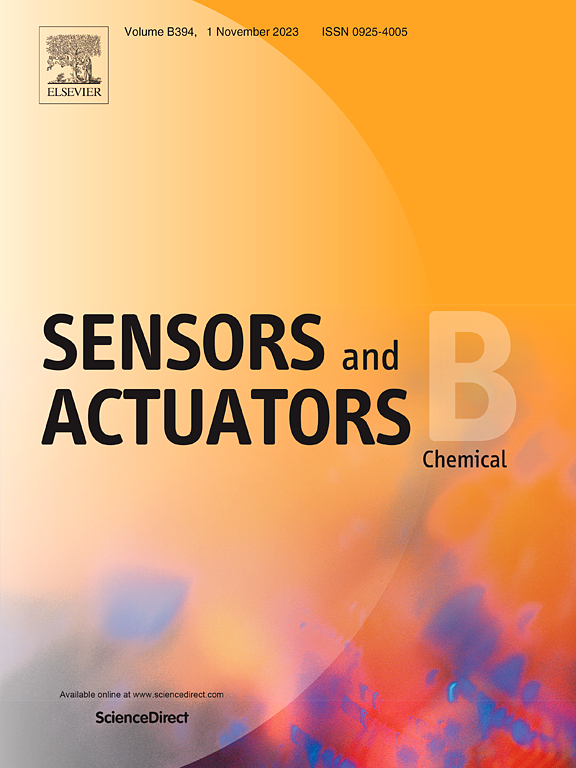A dual-responsive Golgi-targeting probe for the simultaneous fluorescence detection of SO2 and viscosity in food specimens and live cells
IF 8
1区 化学
Q1 CHEMISTRY, ANALYTICAL
引用次数: 0
Abstract
The Golgi apparatus is responsible for regulating the transport of proteins. Research has revealed that an increase in viscosity and sulfur dioxide (SO2) levels in the Golgi are associated with many diseases. Unfortunately, no probes currently exist to simultaneously measure variations in viscosity and SO2 in the Golgi apparatus. With this research, we modified a coumarin-cyanoacetamide probe (1) with a sulfanilamide moiety for targeting the Golgi apparatus. Probe 1 could respond to viscosity increases by exhibiting fluorescence enhancements at 590 nm due to the inhibition of intramolecular rotation. Moreover, the nucleophilic attack of the C![]() C bond by HSO3− resulted in creating a conjugate addition product that generated a blue emission band at 480 nm. Significantly, this probe can identify HSO3− in real water samples and food specimens, as well as monitor HSO3− levels and changes of viscosity in the Golgi apparatus of plants, live cells, and zebrafish.
C bond by HSO3− resulted in creating a conjugate addition product that generated a blue emission band at 480 nm. Significantly, this probe can identify HSO3− in real water samples and food specimens, as well as monitor HSO3− levels and changes of viscosity in the Golgi apparatus of plants, live cells, and zebrafish.
一种双响应高尔基靶向探针,用于同时荧光检测食品样品和活细胞中的SO2和粘度
高尔基体负责调节蛋白质的运输。研究表明,高尔基体黏度和二氧化硫(SO2)水平的增加与许多疾病有关。不幸的是,目前还没有探针可以同时测量高尔基体中粘度和二氧化硫的变化。在这项研究中,我们用磺胺修饰了香豆素-氰乙酰胺探针(1),用于靶向高尔基体。探针1可以通过抑制分子内旋转在590nm处表现出荧光增强来响应粘度的增加。此外,HSO3−对C=C键的亲核攻击产生了共轭加成产物,在480 nm处产生蓝色发射带。值得注意的是,该探针可以识别真实水样和食物样品中的HSO3 -,以及监测植物、活细胞和斑马鱼高尔基体中HSO3 -的水平和粘度变化。
本文章由计算机程序翻译,如有差异,请以英文原文为准。
求助全文
约1分钟内获得全文
求助全文
来源期刊

Sensors and Actuators B: Chemical
工程技术-电化学
CiteScore
14.60
自引率
11.90%
发文量
1776
审稿时长
3.2 months
期刊介绍:
Sensors & Actuators, B: Chemical is an international journal focused on the research and development of chemical transducers. It covers chemical sensors and biosensors, chemical actuators, and analytical microsystems. The journal is interdisciplinary, aiming to publish original works showcasing substantial advancements beyond the current state of the art in these fields, with practical applicability to solving meaningful analytical problems. Review articles are accepted by invitation from an Editor of the journal.
 求助内容:
求助内容: 应助结果提醒方式:
应助结果提醒方式:


